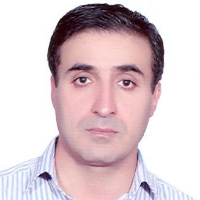Planning Child-Friendly City (CFC) from children's perspective (Case study: Quchan)
Author(s):
Abstract:
The present article studies researches conducted over the field of child friendly cities، especially in Europe، from 1980 onwards. Those researches are mostly about the allocation of the right of citizenship to children and satisfying their needs. The Child-Friendly City (CFC) is today on top of agenda of decision makers over urban affairs. This is particularly important when considering that the world’s population of children in urban areas of developing countries is on the rise. The present article specifically tries to study the chances of children to have a share in making their own environment and highlights their ideas on that front. What further increases the significance of this is the fact that the CFC project is mainly about creating opportunities for children in order to shape or change the environment around them. In recent years، many studies have been carried out in developed countries about CFC. For the first time in 2007، UNICEF identified Bendigo in Australia as the first city in which the CFC project was successfully implemented. Bendigo was in fact identified as a city in which children’s rights had been catered for as an important priority in urban planning issues. In Iran، the issue of protecting children’s rights in urban planning is almost a new concept. The first important measure to that effect may have been taken by UNICEF after Bam earthquake in southern Iran. Nevertheless، it was only in 2000 when Evaz city in Fars province was chosen as a CFC project in Iran (Esmaeilzadeh Kavaki، 2011، 146). Shiyeh for first time in Iran wrote a book entitle “Prepare City for Children” in which the need for considering suitable urban spaces for children was addressed as well as how to deal with children’s needs. The methodology adopted for doing the present research is descriptive and analytical and is also based on library surveys and field studies. The research envisaged group conversation methodology and careful attention was paid to children’s ideas about Quchan، a city in northeastern Iran، and their living conditions in the environment around them. Also، a goal group was used to assess the results based on CFC norms. The present article will try to answer the following question: From the viewpoint of children، what should an ideal city look like? This question is based on the assumption that CFC allows children to have a share in designing their ideal city. To find the answer to the above question for the case of Quchan، the researchers tried to use control analysis and group conversation. The researchers also used questionnaires as well as paintings by children and even interviewed them. A goal group was used to obtain more precise descriptions of the expectations of children for an ideal city and those expectations were used to design a CFC model for Quchan. The participants in the research were 40 children between 9 to 11 years old from Meraji elementary school in Quchan. The children were randomly selected. The first activity was interviewing the children. Also، instead of increasing the number of participants، the researchers tried to assess the results of studies and interviews with a goal group. The present study shows that Quchan is in the first levels of CFC. Some 64 percent of children believe that so many trees، green space and children’s game equipment must be installed in their neighborhoods. As a result، the research revealed that it is necessary to consider children’s participation in designing the city environments. Analysis of results also showed that it is necessary for state organizations and municipality to take administrative and operational strategies for the realization of CFC objectives by considering children’s expectations of an ideal city structure. Interestingly، most of the children in their paintings have drawn a neighborhood full of trees and beautiful natural landscape free from any form of air pollution. They also used signs and symbols that portrayed their neighborhoods as a safe area. This may be an indication of a lack of safety for children in areas under study in Quchan. Some children even drew in their paintings of an ideal city a special place for children’s cinema to show movies for children. The results of the questionnaires showed that only 32% of children go to school on foot and 46% with school bus or other transport means. The rest showed in their questionnaires that go to school with their parent cars. Nevertheless، they described this as a very disturbing issue because the children prefer going to school with school bus. Results of the study revealed more dimensions about what needs to be done with regards to implementing a successful CFC model in Quchan. The study also showed that domestic and international organizations like UNICEF and the Center for Intellectual Development of Children of Iran can play a key role in the establishment of a CFC project. Nevertheless، Iran currently lacks any specific action plan for the implementation of a CFC project in cities. In fact، most cities like Quchan are in elementary levels of moving toward CFC ideals.
Keywords:
Language:
Persian
Published:
Bagh-e Nazar, Volume:9 Issue: 20, 2012
Page:
51
magiran.com/p1005958
دانلود و مطالعه متن این مقاله با یکی از روشهای زیر امکان پذیر است:
اشتراک شخصی
با عضویت و پرداخت آنلاین حق اشتراک یکساله به مبلغ 1,390,000ريال میتوانید 70 عنوان مطلب دانلود کنید!
اشتراک سازمانی
به کتابخانه دانشگاه یا محل کار خود پیشنهاد کنید تا اشتراک سازمانی این پایگاه را برای دسترسی نامحدود همه کاربران به متن مطالب تهیه نمایند!
توجه!
- حق عضویت دریافتی صرف حمایت از نشریات عضو و نگهداری، تکمیل و توسعه مگیران میشود.
- پرداخت حق اشتراک و دانلود مقالات اجازه بازنشر آن در سایر رسانههای چاپی و دیجیتال را به کاربر نمیدهد.
In order to view content subscription is required
Personal subscription
Subscribe magiran.com for 70 € euros via PayPal and download 70 articles during a year.
Organization subscription
Please contact us to subscribe your university or library for unlimited access!



